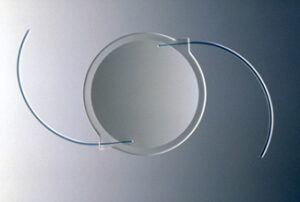Are you considering getting an IOL implant? If so, you’re not alone. IOL implants are becoming increasingly popular and for good reason. They offer a wide range of benefits for people who want to improve their vision. But before you go ahead and schedule your surgery, it’s important that you learn as much as possible about IOL implants. In this blog post, we will discuss the truth about IOL implants. We will cover everything from the benefits to the risks involved in the surgery. By the end of this article, you will have a better understanding of what to expect if you decide to get an IOL implant.
Defining IOL Implants
 IOL implants are artificial lenses that are surgically placed in the eye to improve vision. The implants are made from different materials, such as silicone or plastic. IOLs can be used to treat a variety of vision problems. IOLs are also sometimes used in cataract surgery to replace the natural lens of the eye. There are two main types of IOL implants:
IOL implants are artificial lenses that are surgically placed in the eye to improve vision. The implants are made from different materials, such as silicone or plastic. IOLs can be used to treat a variety of vision problems. IOLs are also sometimes used in cataract surgery to replace the natural lens of the eye. There are two main types of IOL implants:
- Monofocal IOLs
Monofocal IOLs are the most common type of IOL implant. They are designed to correct one type of vision problem, such as nearsightedness or farsightedness. Monofocal IOLs can also be used to treat astigmatism. However, they will not correct presbyopia, which is the age-related loss of near vision.
Multifocal IOLs are designed to correct multiple types of vision problems. They can be used to treat nearsightedness, farsightedness, and presbyopia. Multifocal IOLs work by focusing light at different distances, which allows you to see clearly at all distances.
IOL implants are permanent and cannot be removed once they have been placed in the eye. The surgery to implant an IOL is usually safe and effective. However, as with any surgery, there are risks involved. These risks will be discussed in more detail later in this blog.
How To Know You Need IOL Implants?
It is a rather common misconception that only people with cataracts need IOL implants. However, this is not the case. There are a number of different conditions that can be treated with IOL implants. If you have any of the following conditions, you may be a candidate for IOL surgery:
- Nearsightedness (myopia)
- Farsightedness (hyperopia)
- Astigmatism
- Presbyopia
- Cataracts
Moreover, even if you don’t have any of the above conditions, you may still be a candidate for IOL implants. This is because IOLs can also be used for cosmetic purposes. For example, if you are unhappy with your current eyeglasses or contact lenses, you may want to consider getting IOL implants. It can also be helpful to speak with your doctor or an IOL specialist to learn more about whether or not you are a good candidate for the surgery.
Myths And Misconceptions
 Like with any new technology, there are always a number of myths and misconceptions that circulate. It is important that you do your own research to separate the facts from the fiction. Some common myths about IOL implants include:
Like with any new technology, there are always a number of myths and misconceptions that circulate. It is important that you do your own research to separate the facts from the fiction. Some common myths about IOL implants include:
- IOLs Are Only For Old People
This is one of the most common misconceptions about IOL implants. While it is true that IOLs are often used to treat age-related vision problems, such as presbyopia and cataracts, they can also be used to treat other conditions. IOLs can be implanted in people of all ages.
- IOLs Are Only For People With Bad Vision
Another common misconception is that IOLs are only for people with bad vision. While IOLs can be used to treat a number of different vision problems, they are not just for people with bad vision. In fact, many people who get IOL implants have perfect vision. They simply want to improve their eyesight even further.
- IOLs Are Experimental
This could not be further from the truth. IOLs have been used for over 50 years and are one of the most common types of eye surgery. Millions of people around the world have had IOL implants with great success.
- IOLs Are Only For Rich People
This is another myth that needs to be debunked. While IOL implants can be expensive, they are not just for rich people. There are a number of financing options available that can make IOL implants more affordable.
- IOLs Are Dangerous
Like with any surgery, there are always risks involved. However, IOL surgery is generally safe and effective. Complications from the surgery are rare.
Now that we are more aware of some of the myths and misconceptions about IOL implants, let’s take a more in-depth look at how they work in the coming section.
How Do IOL Implants Work?
IOL implants are placed in the eye during a surgery. IOL surgery is usually performed by an ophthalmologist, which is a doctor who specializes in eye care. The surgery is typically done on an outpatient basis, which means you will not have to stay overnight in the hospital. During the surgery, the surgeon will make an incision in your eye and remove the natural lens. The IOL will then be placed in the empty space where the natural lens was removed.
It is also a noted observation and a rather common misconception that people who have IOL implants will need to wear glasses or contact lenses. However, this is not always the case. In fact, many people who get IOL implants are able to see just as well, if not better, than they did before surgery.
The surgery procedure is relatively simple and only takes about an hour. The recovery time is also fairly short. Most people are able to return to their normal activities within a few days.
There has been a rapid increase in the number of people getting IOL implants in recent years. This is due to the many benefits that they offer. If you are considering IOL surgery, be sure to do your research and consult with a qualified specialist.
What Are The Benefits?
 The benefits of IOL implants are many. Here are just a few:
The benefits of IOL implants are many. Here are just a few:
- IOLs can improve your vision and help you see more clearly. This happens by correcting refractive errors, such as nearsightedness, farsightedness, and astigmatism.
- They can help you see better at night due to their ability to reduce glare and halos.
- IOLs also make it easier to see better in low-light conditions as they allow more light to enter the eye.
- Moreover, they can help you see better at a distance and up close. This is because they allow the eye to focus light on the retina more effectively.
- IOLs can reduce your need for glasses or contact lenses. As discussed above, they can correct refractive errors and allow you to see more clearly.
- Lastly, IOLs are a safe and effective way to improve your vision. They have been used for over 50 years and millions of people around the world have had successful IOL surgery.
If you are considering IOL surgery, be sure to consult with a qualified specialist. They will be able to answer any questions you may have and help you make an informed decision.
What Are The Risks?
As with any surgery, there are always risks involved. Some of the risks associated with IOL surgery include:
- Infection
- Bleeding
- Swelling
- Inflammation
However, these complications are rare. Most people who have IOL surgery experience no problems whatsoever. In fact, many people report feeling better than ever after the surgery.
Some other possible risks or disadvantages may also include:
- The need for glasses or contact lenses after surgery
- Dry eyes
- Glare or halos around lights
- Double vision
These are all relatively minor side effects that usually go away within a few days or weeks.
If you experience any of these side effects, be sure to consult with your doctor. They will be able to help you manage them and make sure that they don’t cause any long-lasting impacts on your vision.
FAQs (Frequently Asked Questions)
 Since the implant process is relatively unpopular and unknown, many patients have questions regarding the surgery. Here are some of the most frequently asked questions:
Since the implant process is relatively unpopular and unknown, many patients have questions regarding the surgery. Here are some of the most frequently asked questions:
- How long does it take to recover from IOL surgery?
Most people are able to return to their normal activities within a few days. However, it is important to follow your doctor’s instructions and take things easy for the first week or two.
- Can I have both eyes done at the same time?
Yes, you can. In fact, many people choose to have both eyes done at the same time so that they can experience the full benefits of the surgery right away.
- Is IOL surgery covered by insurance?
In most cases, IOL surgery is not covered by insurance. However, some insurance plans may cover a portion of the cost.
- Are there any age restrictions for IOL surgery?
No, there are no age restrictions. IOL surgery can be performed on people of all ages.
- What happens if I don’t like the results?
In most cases, the results of IOL surgery are permanent. However, there are some cases where the implants may need to be removed or replaced. If you are not happy with the results of your surgery, be sure to consult with your doctor.
IOL surgery is a safe and effective way to improve your vision. If you are considering surgery, be sure to do your research and consult with a qualified specialist.
This wraps up our comprehensive guide on IOL implants. We hope that this has helped you learn everything you need to know about this surgery.
Conclusion
Conclusively, we can say that IOL implants are a great way to improve your vision. If you are considering surgery, be sure to consult with a qualified specialist. It can prove to be a life-changing decision for your eye care. With the correct guidance, you can make an informed decision about your surgery.
Please feel free to share this guide with anyone who may be considering IOL surgery. And if you have any questions, please don’t hesitate to reach out to Eye Mantra. At EyeMantra we have a team of experienced eye surgeons, who will be happy to answer your any questions on cataract surgery, cataract surgery cost, cataract lens cost for different cataract surgery types- Phacoemulsification, MICS & Femto Laser Cataract . Call us at +91-9711116605 or email at [email protected] for inquiries.


